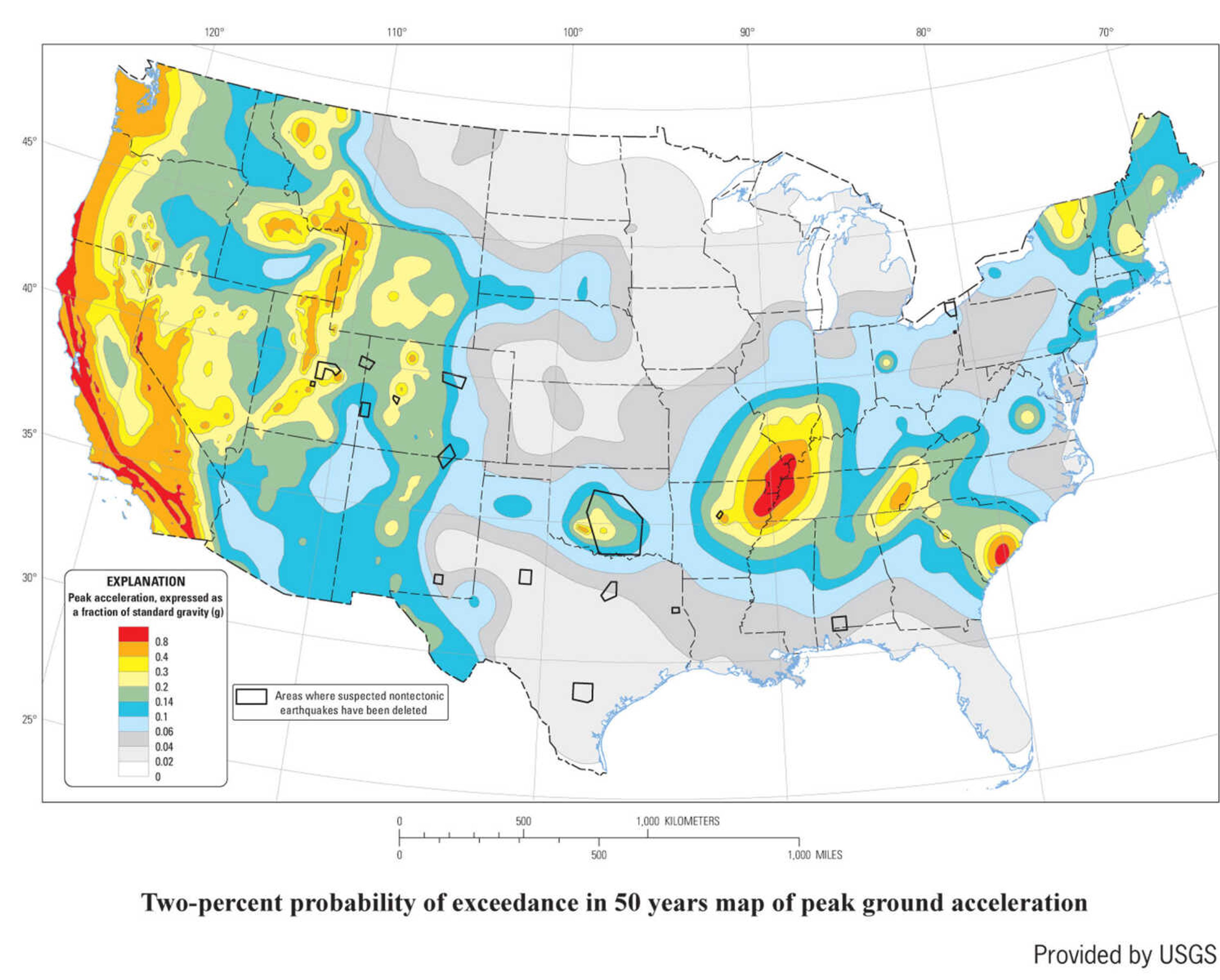New Madrid quake potential elevated
POPLAR BLUFF, Mo. -- The chances of the New Madrid "big one" rocking the area may be greater than previously thought, according a recent update of the U.S. Geological Survey's National Seismic Hazards Map. The update reflects the USGS's best and most recent understanding of when and where earthquakes are likely to occur and how intense they might be. The map previously was released in 2008 and shows earthquake potential over a 50-year period...
POPLAR BLUFF, Mo. -- The chances of the New Madrid "big one" rocking the area may be greater than previously thought, according a recent update of the U.S. Geological Survey's National Seismic Hazards Map.
The update reflects the USGS's best and most recent understanding of when and where earthquakes are likely to occur and how intense they might be. The map previously was released in 2008 and shows earthquake potential over a 50-year period.
An updated USGS report says the New Madrid Seismic Zone has a larger range of potential earthquake magnitudes than previously imagined.
Emergency Management Agency director Jeff Shawan said the report and others like it paint a grim picture of life in Southeast Missouri if the New Madrid monster quake occurs.
"If we have a cataclysmic event in the New Madrid Fault, Butler County will be severely affected," Shawan said. "Eastern Butler County is part of the liquefaction zone, and we know the destruction there will be extreme. However, destruction in western Butler County will be significant as well."
A 1985 Federal Emergency Management Agency report estimates for Poplar Bluff a 7.6 magnitude earthquake causing $693 million in damages and one death if the quake occurs at night.
The report estimated 17 deaths if it occurs during the day when school is in session. Areas closer to the fault will suffer even more damage.
"If this event occurs, lives in Southeast Missouri and the Bootheel as we know it will change probably for a generation. We are talking about massive destruction of infrastructure. I'm talking about a major quake 7.5 to 8 on the Richter scale," Shawan said.
Mississippi, New Madrid and Pemiscot counties would see between 0.2 percent and 2 percent of their populations killed and from 1 percent to 10 percent of their populations seriously injured, according to FEMA.
Scott, Stoddard and Dunklin County estimates are up to 1 percent killed and from one-half to 5 percent of the population seriously injured, according to FEMA.
Poplar Bluff would serve as the center of regional operations for FEMA and the State Emergency Management Agency in the event of a mega quake because of its location west of the Black River and the liquefaction zone, Shawan said.
"There are FEMA plans in place to respond to a very large event. If we have the big event, the I-55 corridor is to some extent going to be destroyed, so transportation is a big deal," he said. "SEMA has plans to arrive in Poplar Bluff that includes multiple routes to get here and has the capability to build temporary bridges in the event bridges are crushed. But the plan is to come to Poplar Bluff to respond to the needs of the region."
The new map and other information on seismic events can be found at earthquake.usgs.gov.
The website ready.gov provides an extensive guide on what to do before, during and after a quake.
The New Madrid Seismic Zone in Southeast Missouri, northeastern Arkansas, western Tennessee, western Kentucky and Southern Illinois is the nation's most active seismic zone east of the Rocky Mountains, according to the Missouri Department of Natural Resources.
Connect with the Southeast Missourian Newsroom:
For corrections to this story or other insights for the editor, click here. To submit a letter to the editor, click here. To learn about the Southeast Missourian’s AI Policy, click here.









